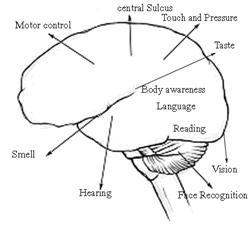
Find out how our minds and brains relate to one another
Stress, anger, concentration, clarity of thought, etc. are all influenced by your physical wellbeing (eg. fitness, general health, the food you eat). This course develops an understanding of the relationship between our brain and nervous system with our thoughts and behaviours. It examines how a person's physical body is associated with their mental processing.
Learn about the biology of the brain and how it relates to things like our senses, the way we perceive the world, and altered states of consciousness.
Graduate Comment: "I thoroughly enjoyed the course and found ACS to be wonderful in all aspects" D. Kenyon, ACS Biopsychology student